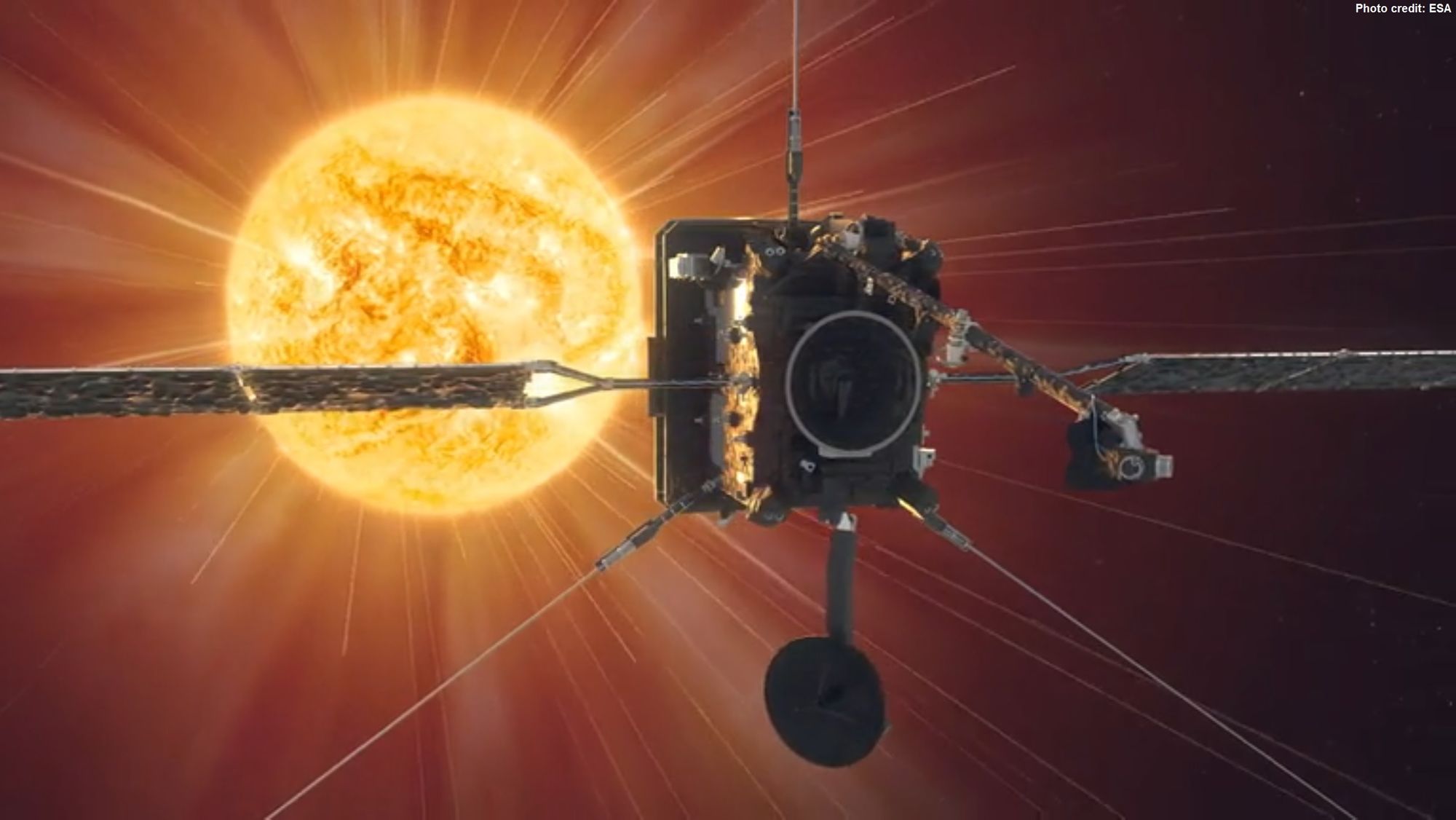
☀️ ESA’s Solar Orbiter has taken a record-close look at the Sun
The spacecraft made its first close approach in June and took unprecedented photos of our star, the closest ones ever taken.
Share this story!
The European Space Agency's Solar Orbiter, a mission to study the solar wind and solar flares, has performed its first perihelion passage, i.e. flown past the point in its current orbit that’s closest to the Sun, and taken close-up photos from a record-short distance from our star. On the 15th June 2020, the spacecraft got as close as 77 million km to the Sun, roughly half an astronomical unit (the distance between the Sun and the Earth). Six imaging instruments on-board took close-up pictures of the Sun during the perihelion passage, yielding the closest high-resolution images of our star ever captured. In addition to that, the spacecraft made measurements of the space environment at the location of itself, yielding data for solar wind and magnetic field.
The pictures show interesting details of the Sun’s surface that scientists can use to figure out the causes of previously unknown phenomena on the Sun, such as temperature variations between the different layers of the star.
Project Scientist Daniel Müller and Deputy Project Scientist Yannis Zouganelis when interviewed for a news post on the ESA website shortly after the perihelion passage:
"For the first time, we will be able to put together the images from all our telescopes and see how they take complementary data of the various parts of the sun including the surface, the outer atmosphere, or corona, and the wider heliosphere around it," said Daniel Müller.
"This is the first time that our in-situ instruments operate at such a close distance to the sun, providing us with a unique insight into the structure and composition of the solar wind," said Yannis Zouganelis.
Solar Orbiter can correlate all these data with each other, providing new conclusions for solar science, for example whether the abundance of certain elements is the same in the Sun’s corona (as detected through spectral analysis of the images) as in the solar wind at the location of the spacecraft.
The spacecraft was launched on the 10th of February from Cape Canaveral in Florida, United States. Having now completed its commissioning phase by meeting the first perihelion milestone and testing its scientific instruments, it will start a cruise phase that lasts until November next year. In the beginning of 2022, Solar Orbiter will then make a closer encounter with the Sun at a 48 million km distance. In the years that follow, the spacecraft will make even closer fly-bys, ultimately getting as close as some 42 million km. To give some perspective, Mercury’s perihelion is 46 million km. Solar Orbiter is made to withstand 500 °C temperatures thanks to a heat-resistant structure protecting the inner parts of the spacecraft from sunlight that’s thirteen times stronger than at the Earth’s distance from the Sun.
Later during the mission, Solar Orbiter will make several close fly-bys past Venus, using the planet’s gravity to tilt the orbit and allow for viewing the Sun from new angles, enabling picture-taking of the Sun's poles for the first time in history. Monitoring those regions will give scientists a better understanding of how the Sun's magnetic field behaves and of the underlying science behind the solar wind.
The images taken by Solar Orbiter during the close encounter were released one month later, after having been downloaded via a ground-based deep space antenna and analyzed by ESA scientists. These images show structures in the solar atmosphere that could be interpreted as nanoflares, i.e. bursts of radiation much smaller than the solar flares we are used to observing from Earth. Miniature eruptions can be seen everywhere in the images taken. They look a bit like campfires being photographed from above. The occurrence of all these nanoflares could explain the high temperatures in the Sun’s corona, which are on the order of 1 million °C, some 200 times higher than in the photosphere underneath. Essentially it means that there’s an abundant process of energy transfer from inner layers of the Sun to the surface.
At the moment, the solar activity is very low. After some years, when the main science phase of the mission begins and when the solar activity increases again, Solar Orbiter will be able to capture even more stunning pictures of solar fireworks.
The study of solar wind is an increasingly important field of research the more humanity sets course out into space and the more we make ourselves accustomed to technology and connectivity. These charged particles can cause great damage here on Earth, disturbing electrical devices on the ground and satellites in orbit. For example, in 1859 there was an exceptionally large solar storm that knocked out a great deal of the North American telegraph network. Historical records report about sightings of northern lights as far down south as the Caribbean at that time. These events can occur again, and missions like Solar Orbiter are there to prepare us for it.
(Photo credit: European Space Agency)
By becoming a premium supporter, you help in the creation and sharing of fact-based optimistic news all over the world.


